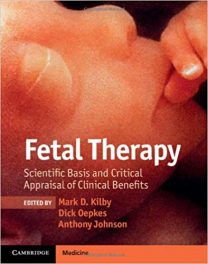Authors: Kenneth H. Ibsen, PhD and Nandan Bhatt, MD
Publisher: Wolters Kluer-Lippincott, Williams & Wilkins – 365 pages
Book Review by: Nano Khilnani
This book helps you prepare to take the step 2 (clinical knowledge) portion of the medical licensing exam in the United States. We urge you, the exam taker, to carefully read the “Using this Book” section provided in the Preface. To emphasize its importance, we would urge you to read it a second time, and take notes on how to best prepare for it.
Studies of successful test-takers have shown that it is not just the level of knowledge of various subjects (in this case, medical and surgical specialties) that leads to test-takers’ high scores in exams, but also their close knowledge and developed skills of exam-taking that are critical to successful outcomes.
The authors state at the outset that they have simulated the practice tests in this book as closely as possible to the real tests in the actual exam you will be taking. That is certainly a plus for this book.
The contents of the tests and the nature of the questions asked therein, relate to these six disciplines: medicine (and specialties therein); obstetrics; pediatrics; preventive medicine and public health; psychiatry; and surgery.
Some 1,000 questions are organized into 20 packets of 50 questions each. Of these, 600 questions are provided to you in this study guide and test-practice workbook. The other 400 are presented on the web. The subject matter in the 50-question sets does not all pertain to a single medical discipline or specialty. The are chosen randomly from many specialties, hopefully to make mentally nimble and be better prepared to take the exam.
The authors also state that the difficulty level of the questions is higher than that of the real exam, which makes sense. Better to learn driving on a large car so that you will be able to drive all sizes of cars.
Multiple choice and one correct answer is the format of the about 80 percent of the questions or cases, while the other 20 percent consist of matching sets. The correct answers are provided at the back of the book, along with detailed explanations why the other choices are wrong, and why the correct answer is correct.
The authors suggest that when you use this book, you should have a two-fold goal. The first is to broaden and deepen your knowledge base. The second is to develop your test-taking skills. Get detailed explanations for doing both in the “Using this Guide” section.
Each question and possible answers presented are preceded by a brief discussion of the case. You are asked as to what you think would be the best course of action to take. You are given choices, just as you will be facing in real-life when practicing medicine.
A sample test-question and the five choices is this one:
“A 14-year-old boy comes to the office because his breasts have recently become tender and slightly swollen. He is worried that he is undergoing feminization and will grow up to become a “freak.” Upon examination a tender, two-centimeter mass is found to be palpable in the subareolar region of both breasts. Which of the following describes the best course of action?
(A) Excise the masses by performing a subcutaneous mastectomy
(B) Incise and drain the masses
(C) Treat the masses with topical steroids
(D) Aspirate the masses for culture and cytology
(E) Leave the masses alone.”
What would be your course of action in this case? The correct choice is (E): leave the masses alone. Here is a brief explanation as to why this is the correct answer:
“Adolescent gynecomastia is usually bilateral, and the tissue averages two to three centimeters in diameter. The breast enlargement is transient and most often subsides within one year; as a consequence the gynecomastic breast usually should be left alone (choice E). The boy should be reassured that he is normal and does not have to worry about developing breasts.”
Kenneth Ibsen, PhD is emeritus professor of biochemistry at the college of medicine of the University of California at Irvine. He is a continuing medical education director of Kaplan Medical.
Nandan Bhatt, MD is a physician and surgeon He works at the department of development services for the state of California and is on the faculty of Kaplan Medical.
Four doctors contributed material for this book. They are:
Dr. William G. Cvetic, board-certified in pediatrics and neonatal-perinatal medicine, and is on the faculty of Kaplan Medical, USA.
Dr. Christine E. Koerner, professor of emergency medicine at University of Houston’s medical school and chief of pediatric emergency medicine at the Lyndon B. Johnson General Hospital.
Dr. Elmar P. Sakala, professor of gynecology and obstetrics at Loma Linda University’s school of medicine.
Dr. Roderick Shaner, clinical professor of psychiatry at the Keck School of Medicine at the University of Southern California






